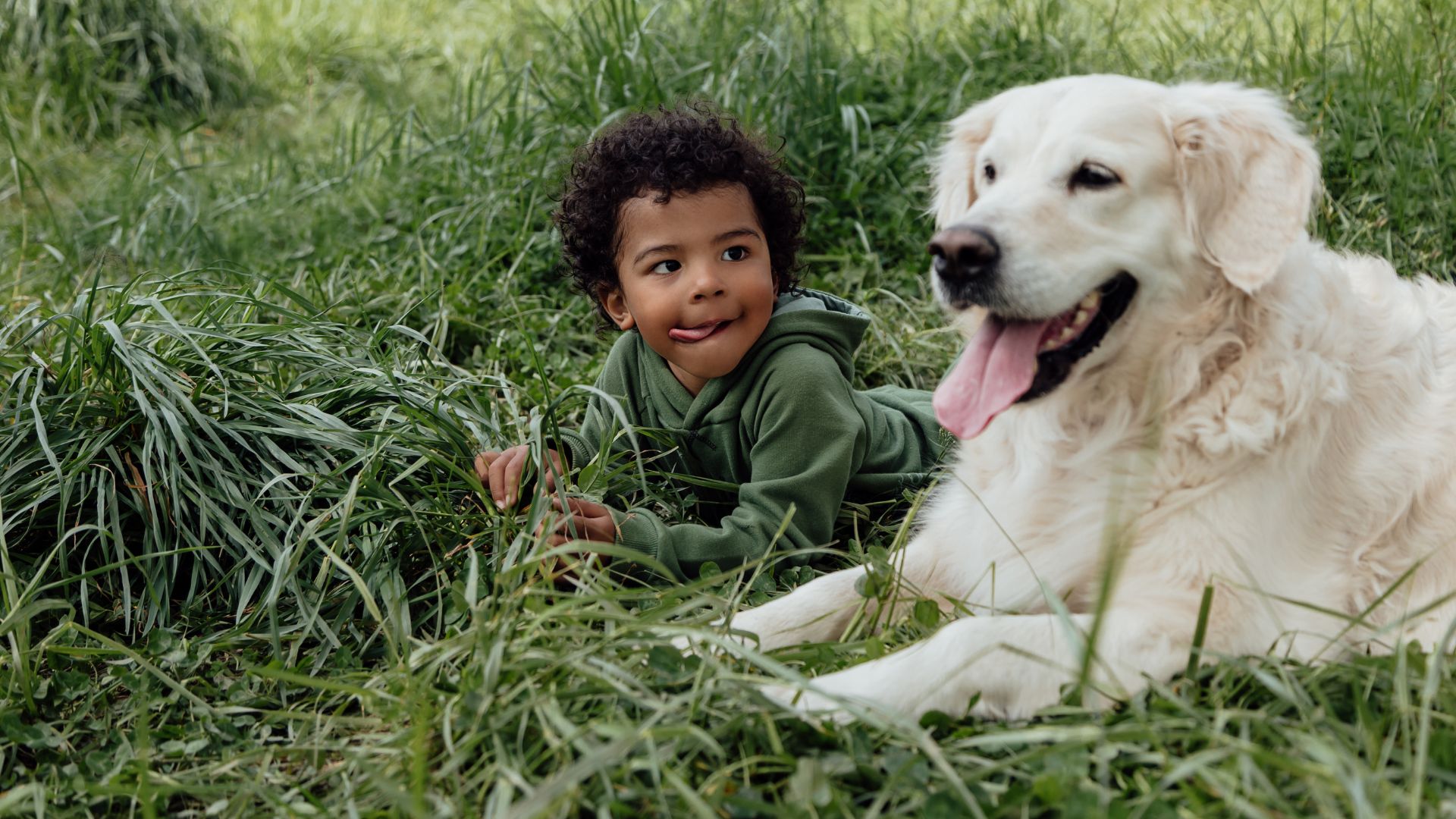10 interesting dog facts you've probably never heard of, until now
These interesting dog facts prove what we perhaps already know: canines are fascinating fur friends!

Canines really are amazing creatures and there is a bundle of interesting dog facts to prove it.
From being able to pick up scents from 12 miles away and using sneezing as a form of communication, to having a completely unique nose print that can track down a favorite toy in minutes (if not seconds). These loveable balls of energy get more fascinating by the day.
But our fascination with man's best friend is just getting started. Perhaps you already know that dogs' noses are wet to help them smell? Or that these super sleuths have up to 300 million scent receptors, ready to help them find their way home or track down just about anything? Or maybe you could name the 'barkless' dog that yodels? (It's a Basenji, in case you're wondering).
Either way, we have uncovered a handful of the most interesting dog facts that are bound to leave your mind blown.
Interesting dog facts

1. Dogs can pick up a scent from 12 miles away
It's no secret that dogs have a world-class sense of smell – they possess up to 300 million olfactory receptors in their noses, compared to humans who have around six million. But did you know, on a good day, these macrosmatic dogs (dogs with a highly developed sense of smell, usually the best hunting dogs) can pick up a scent from up to 20km away?
Of course, this distance will depend on factors like the wind, type of scent and their environment. But it's a pretty impressive stat, considering 20km is essentially the distance between the Empire State Building and Hudson Park.
2. Dogs have an internal compass
A dog's sense of direction has always been pretty impressive. In fact, multiple studies have shown that dogs can find their way back home from miles away because of their incredible homing abilities.
PetsRadar Newsletter
Get the best advice, tips and top tech for your beloved Pets
However, a more recent 2020 research study found that dogs have their own internal compass, as they can tap into the Earth's magnetic field to 'consult' shortcuts in unknown terrain by orientating themselves along the north-south lines.

3. A dog's nose print is completely unique
Along with their mouths, dogs investigate the world around them with their noses. If it's not nuzzled in a portion of their favorite dinner you've put out for them, it's lovingly nudging you, buried in a blanket or sniffing a tree.
But their noses aren't just there to help them smell. Each dog has a unique nose print, just like how humans have their own one-of-a-kind fingerprint. This means pups can be identified from this print and it can help in reuniting lost dogs with their owners.
4. Some dogs use sneezes as a form of communication
Just like humans, your dog might sneeze in reaction to dust or other allergens. But a 2017 study found that the action of sneezing could also be a form of communication.
The study, which investigated the collective decisions made by free-ranging African wild dog packs in Botswana, found that specific behavioral mechanisms (like sneezing) act as a type of “voting” mechanism communication that shapes decision-making in a wild animal society. Pretty fascinating, huh?

5. Dogs can smell cancer cells
So, as we've touched on, dogs use their sense of smell to perceive the world. Their highly developed sense of smell means that they can tap into our emotions, they can sniff out bedbugs (yes really!) and detection dogs can be trained to track down narcotics and explosives.
But now, there is a growing bank of research to show that medical detection dogs can also smell cancer in humans by smelling someone's breath, skin, urine, feces or sweat. At present, research has shown that dogs can detect melanoma, lung, ovarian, prostate, colorectal and breast cancer. And as of 2024, a new project is underway to train dogs to detect bowel cancer.
6. Dogs curl up to protect their vital organs
Ever caught your pooch curled up in a tight ball in one of the best dog beds money can buy? This donut-shaped pose with their limbs tucked close to their bodies and their nose near the tail might look comfy and cozy (and we're sure it is) but a dog's sleeping position can tell you a lot of things.
For starters, as one study published in the journal Animals found, their slumber position can tell you whether they are feeling anxious. Their sleep stance can also tell you whether they're in a deep sleep or feeling safe and comfortable. And in this case of the 'donut' position, dogs tend to curl up in a tight ball to help them feel small, regulate their body temperature and protect their vital organs from potential attackers.
So if you've spotted your dog sleeping in this position more often than not, consider learning how to help your dog adjust to their new home or diving into this guide on five trainer-approved ways to support your anxious dog.

7. The average dog is as intelligent as a two year old
Who's a clever boy? Your dog! According to a recent 2024 report, published in the journal Current Biology, researchers – who placed electrodes on the heads of 18 pet dogs – found that dogs could recognize the patterns of sound coming from their owner's mouths and also understand that certain words refer to specific objects.
Plus, a previous 2009 study found that the average dog can understand up to 250 words and gestures along with having a basic understanding of arithmetic. Researchers noted that these clever pooches can even notice errors in 'simple computations', such as 1+1=1 or 1+1=3. Meaning? The average dog is as knowledgable as a two-year-old.
8. Dogs have three eyelids
Unlike humans who have two eyelids per eye – an upper and a lower eyelid – the eye of a dog consists of three lids. This includes an upper, lower and a third lid, which is referred to as a nictitating membrane or a haw.
Birds, reptiles and some other mammals, like horses, have three lids and these extra additions are for a number of purposes, like protecting the eye from injury, keeping the eye moist and keeping the cornea clean.

9. A group of pugs is called a grumble
You call a collection of baby dogs puppies and a group of adult dogs a pack. But did you know, the correct name given to a group of three or more pugs is a grumble?
With their endearing snuffling and grunting sounds, this adorable name given to a pack of pugs perhaps comes as no surprise. Who knew a collection of these comical and often hilarious grumbles could get even cuter? And if you’re interested, here are more specific pug facts to enjoy!
10. A Bloodhound’s sense of smell can be used as evidence in court
Trailing breeds like Bloodhounds have been used to track people since the Middle Ages. So it's no wonder why these super sleuths have topped our list of the best tracking dogs.
Along with being able to follow tracks more than 300 hours old, they can stay on a trail for more than 130 miles. And it's for that reason the great canine nose has been increasingly used by law enforcement to solve and reconstruct crimes – and in some cases, results derived from these trailing methods have been admissible as evidence in court. Here are more bloodhound facts to impress your friends.
Keen to learn more about particular breeds? We’ve rounded up German Shepherd facts, facts about Pomeranians and chow chow facts. Or, read our in-house vet's favorite dog facts.

Becks is a freelance lifestyle journalist who has more than 9 years of experience in the world of digital and print journalism. She covers health, wellness and family interests for a range of titles. When she's not putting pen-to-paper (or finger-to-keyboard) she's reading, in the gym, or taking her Dog Aunt title very seriously looking after the handful of four-legged creatures in her life.
